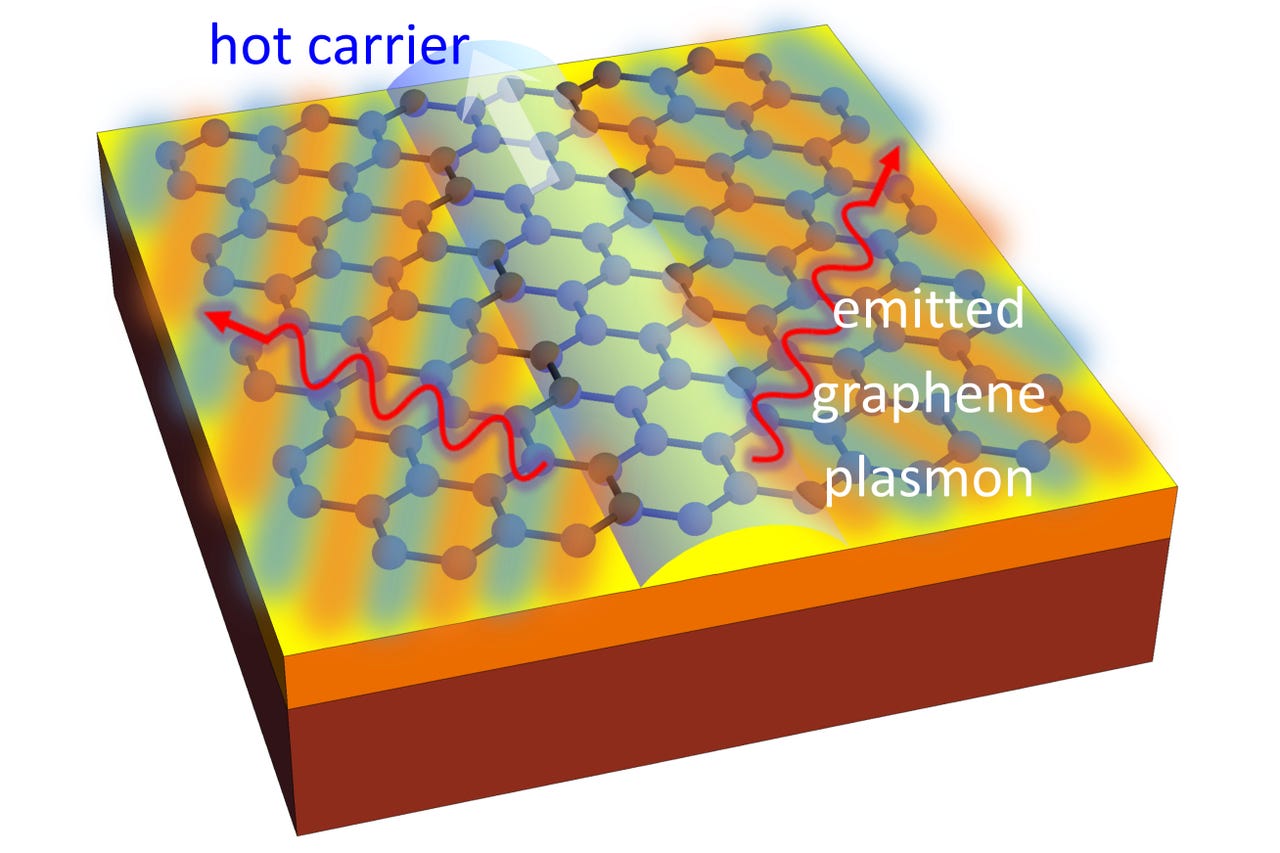MIT graphene breakthrough could make chips one million times faster


Electrons that move faster than the speed of slowed-down light emit plasmons in two directions, shown as the red squiggly line on the sheet of graphene, the blue lattice.
US Army-funded researchers at MIT believe an optical equivalent of a "sonic boom" created using graphene could make chips a million times faster than they are today.
Researchers at MIT and several other universities have discovered that graphene can be used to slow light down below the speed of electrons to create an intense beam of light.
The researchers call the effect an "optic boom", since it is similar to the sonic boom caused by shock waves when a jet breaks the speed of sound.
In graphene, an electron "spews out plasmons" when it moves faster than the speed of the trapped light. The researchers believe this new way of converting electricity into light could pave the way for light-based circuits in ultra-compact computing devices.
MIT highlights that the research was supported by US Army Research Laboratory and the US Army Research Office, through MIT's Institute for Soldier Nanotechnologies.
MIT postdoc Ido Kaminer explains that using light instead of flowing electrons to move and store and data could push operating speeds up to vastly higher levels than those achieved by today's chips.
Although theoretical at the moment, the discovery adds a new thread to the story of graphene's potential in computing chips. Scientists at IBM Research have been exploring how graphene can be used to create new chips that exploit the way electrons move faster through graphene than through other semiconductor materials.
The so-called optic boom also exploits this feature of graphene, which MIT notes allows electrons to pass through the material at up to a million meters per second, or 1/300 the speed of light in a vacuum.
Since graphene can also slow down light, the researchers were able to produce "the Čerenkov effect", which is used to detect cosmic particles in space, but hadn't been considered relevant for earthbound technologies since it only works when objects approach the speed of light.
"Our theoretical work shows that this can lead to a new way of generating light," said Marin Soljačić, an MIT professor of physics who contributed to the graphene breakthrough.
"This conversion is made possible because the electronic speed can approach the light speed in graphene, breaking the 'light barrier'. In the case of graphene, this leads to the emission of a shockwave of light, trapped in two dimensions," Soljačić said.
He said he was confident that the researchers can create a working version of the concept within the next one to two years.
Also contributing to the discovery were researchers from Technion, in Haifa, Israel; the University of Zagreb in Croatia; and the Singapore Institute of Manufacturing Technology.